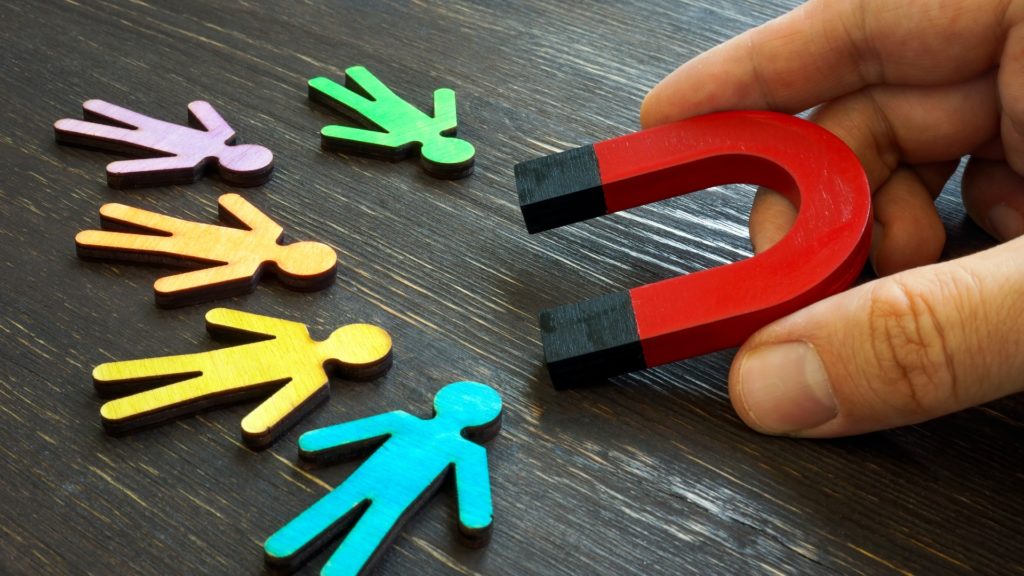
In 2009, the big boss on the smartphone block wasn’t Apple. It was Blackberry, which Fortune magazine named the fastest-growing company in the world. So how did Blackberry fall from grace in just a few years as Apple and other smartphone companies rose? The answer is a fatal mistake that led to drastically poor user retention.
Blackberry had a diehard customer base of mostly business users, and its products worked on a model that involved an actual keyboard. The company gambled, keeping the keyboard designs in hopes that the flat touch-screen phones being introduced by brands like Apple would be a fad.
Obviously, Blackberry lost that bet. While a small user base remained a fan of the keyboard-imbued mobile devices, many users shed their Blackberries in favor of iPhones and other smartphones. Their user retention rates fell drastically, and new customers were hard to come by in a field dominated by slick touch screens.
Product retention stories similar to Blackberry’s play out repeatedly at all scales, with retention issues silently choking the balance sheets and success of many products. Understanding what can go wrong with retention is the first step to avoiding these issues for your product.
Retention is key to the long-term success of any product-led company. The ideas found in this article have been popularized by the brilliant folks over at Reforge. If you’re looking for a cohort-based solution, developed by top leaders in tech, to unlock your company’s growth potential — look no further than Reforge. If you’re looking for an agency partner to do the heavy lifting for you – get in touch to schedule your free Product Growth Strategy Meeting today!
Common Issues Affecting User Retention

Misunderstanding your market or making the wrong gamble with a product is one common way to wreck your retention rates. If you’re not providing what your users want or need, they’ll obviously find alternative products to solve their problems and address their needs.
But products also struggle with retention for other common reasons, including:
- Not prioritizing it in processes
- Not defining retention metrics correctly
- Not measuring engagement
Not Prioritizing Retention

Companies can fail to prioritize user retention within their product simply because it’s not shiny enough. User acquisition can be more exciting, especially in the short-term, and it provides a lot more instant gratification in the form of revenue, team incentivized bonuses, or other rewards designed to drive new users.
Often the pressure to focus solely on acquisition comes directly from investors, stakeholders, and board members obsessed with growth at all costs. Most startups and scale-ups believe product growth is directly related to user acquisition, but that is only part of the story. It’s hard to see the value of good retention in the short-term — or the consequences of bad retention. And if you’re bringing on a lot of new users through viral growth loops or other methods, that growth can temporarily mask the impact of retention issues until it’s too late.
But consider a hypothetical example to understand how a low retention rate can be a hidden issue:
- Two chat products were built targeting the B2B market
- The first product is bringing on 100,000 new users every month
- The second product is bringing on 150,000 new users every month
Which product is more successful? Looking only at these numbers, the clear answer is the second product. But what if you throw retention rates in the mix? If the first product has 80% retention rate and the second product only has 50% retention rate, the total growth of the first product eventually outpaces the growth of the second product.
It may take a couple of years, but eventually, poor retention rates make a product less successful and competitive.
Not Defining Retention Metrics Correctly

Companies tend to base product retention discussions on metrics involving retained revenue. As long as you are retaining subscriptions or revenues, then your retention is healthy, right?
Not necessarily, especially when you’re dealing with products and subscription models. It’s more important to measure the retention of product usage.
Consider this, for example: What if you’re retaining 100% of last month’s subscriptions for a SaaS solution, but only 70% of people are actually using the product. At some point, those other 30% of users may realize they’re not getting value out of their subscription and cancel it. Suddenly, revenue retention is gone, and you had no warning because you weren’t basing your metrics on the right numbers.
Looking at product use retention, though, you need to know the right frequency for your metric. Are you failing if people aren’t using the product daily? It depends on the product. A solution that helps with payroll may only be used once a week or every two weeks, for example, while an email or calendar solution is likely to be used daily.
If Slack looked at whether or not its users logged in at least once a month, it wouldn’t get a good measure of whether retention was healthy. The growth and product teams need to look at whether people are using the product daily. Meanwhile, if Experian wants to look at whether its consumer credit monitoring product is retaining users, it would probably be more interested in weekly or monthly numbers.
Finally, you also need to ensure you’re measuring the right actions. For example, Zoom could measure how many individual people logged into meetings in a given period. It could also measure how many meetings were held during that period.
Both may be valuable to some degree, but measuring the total number of meetings gives Zoom a better picture of user retention. The people logging into meetings aren’t necessarily active users, and you could have one meeting with a hundred people hosted by a single active user or seven meetings with two people each hosted by seven active users. The difference is important when considering how many users are engaging with your product.
Not Measuring Engagement

Having a lot of people using your product regularly is a good sign, but you should also pay attention to how they’re using it. The deeper engagement goes, the better your chances at retaining users.
Consider, for example, the credit monitoring services offered by Credit Karma. The product itself is free — Credit Karma drives revenue by matching people with credit applications and other offers that might be a good match based on their credit profiles and previous behavior with the app.
Now, Credit Karma users can be engaged at a superficial level. They may read the notifications and log in occasionally to see updated credit scores. Or, they can be engaged at a deeper level, which involves logging in more often and checking out the various offers.
Credit Karma has to pay attention to more than the breadth of its retention. It’s not enough to have millions of users taking advantage of the free product to keep up with their credit scores. To make money, Credit Karma needs depth of retention. It needs some of those users to engage deeply enough to apply for offers.
Consider how your product works and how you drive revenue from it. Define the levels of engagement required to make those models work for your product and ensure you’re measuring engagement when considering user retention. These metrics help you understand the overall health of user retention and identify areas for improvement in your product.
The Bottom-Line on Retention

Poor retention is like a slow-growing infection. The symptoms may be masked, and if you’re not checking the right vital metrics, you may not discover the issue until it’s too late.
Healthy product and growth teams pay attention to retention at all times. They spend time defining the type of engagement and retention that supports success and work to make it happen — no matter how great their acquisition growth may currently be.